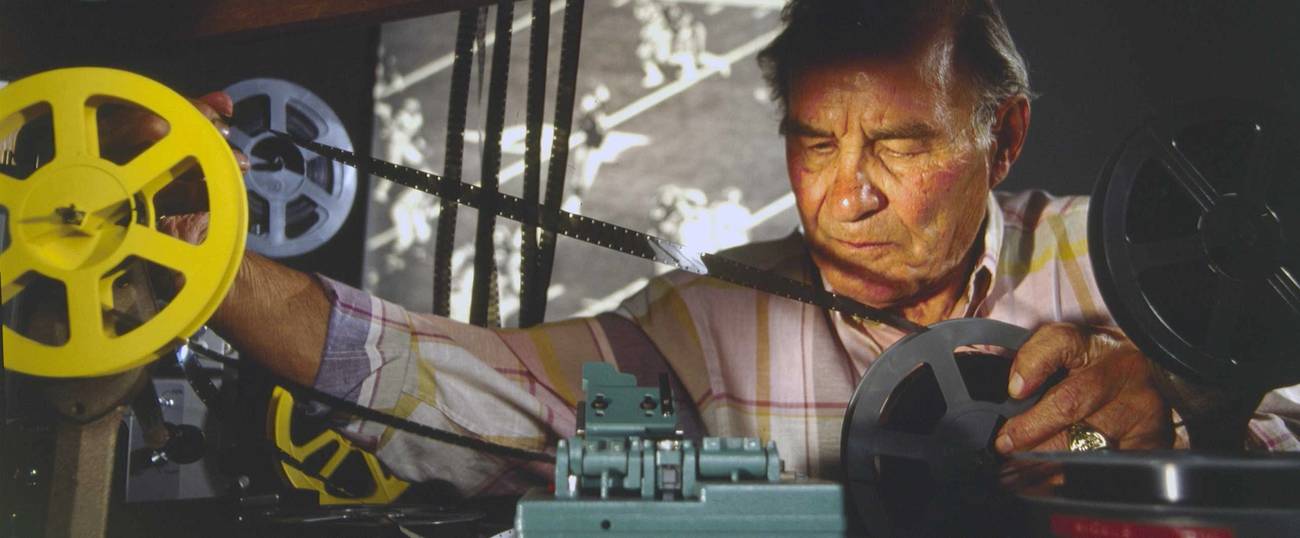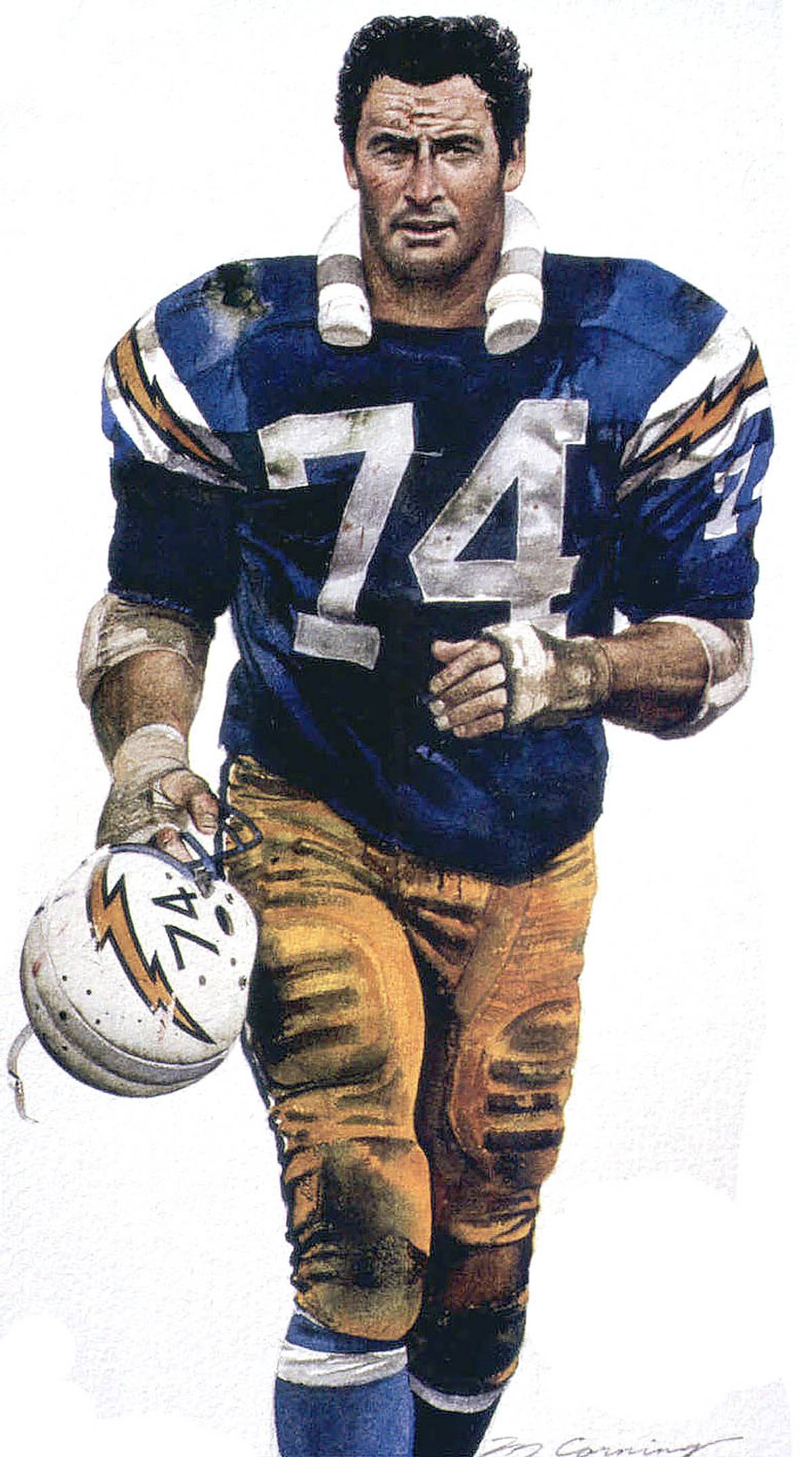Sid Gillman, My Coach
A Pro Football Hall of Fame lineman remembers the character traits he learned from his leader

Peter Read Miller/Sports Illustrated/Getty Images

Peter Read Miller/Sports Illustrated/Getty Images

Peter Read Miller/Sports Illustrated/Getty Images
Sid Gillman was my coach. There is no greater compliment one can give a person because a coach is a teacher, a teacher of not only athletic skills but of fundamental character traits that serve as a foundation for a society with values.
The Duke of Wellington is said to have declared that it was on the playing fields of Eton that the battle of Waterloo was won. He recognized that it is on the athletic field we learn loyalty, discipline, the value of hard work, acceptance of responsibility, respect for oneself and others, and the mark of a mature person: the deferment of immediate gratification for long-term goals.
I first learned of Sid Gillman when I needed him most. In 1955, he was named the head coach of the Los Angeles Rams, the team of my boyhood. At the time, I was a junior at Hawthorne High School and a not very successful substitute on the varsity football team.
I had been born in Boyle Heights, at the time an East Los Angeles Russian-Jewish ghetto. “Ghetto” was a fair description of the place for it was peopled by primarily Jewish immigrants who were trying to figure out how to make a living in this strange land that did not particularly want them. My father had traveled to America by himself at age 13, sent by his family to be the first to leave the oppression in Russia, where Jews could neither be landowners nor obtain an education. After arriving at Ellis Island, he went to Georgia to work on a farm. There he dropped the family name of Rabinowitz and adopted the last name of his employer, Mix, as his own.
The truth is that he never did figure out how to make a living in America and when he met my mother in Boyle Heights, herself a first-generation Russian Jew, he was a tailor in a rundown storefront shop. That shop became our home, with a blanket hung on string separating the public business from the home of the Mix family.
He could not make a living as a tailor, so he was a constant gambler, and a poor one at that. My mother divorced him when I was 4 years old and my brother, Alan, was 5 years old. The three of us moved in with my grandmother, uncle, aunt, and cousin in a one-bedroom apartment in Boyle Heights. When another of my uncles returned from fighting as an American soldier during WWII, he bought a home in Hawthorne, California, under the GI Bill, and the whole of us moved in with him. So, I went from living in Boyle Heights where, because of its immigrant population, I believed everyone in America was Jewish, to living in Hawthorne, where I came to understand that very few persons in America were Jewish and no one in Hawthorne, other than our family, was Jewish.
So, at the time I learned about Sid Gillman, I was short of a father figure and short on identity. Then, I read that a Jew had been named the head coach of the team I had loved for years, the team of Bob Waterfield, Tom Fears, Elroy “Crazy Legs” Hirsch, and Tank Younger. And I learned that this Sid Gillman guy had been an all-American end at Ohio State and played in the first College All-Star Game.
What a revelation it was for me: Jews were not mostly ghetto dwellers and gamblers who left their families—they were also all-American football players and leaders of the Los Angeles Rams. My world had begun an expansion that continues to this day.

Later, after I had also become an all-American football player and was playing professional football for the San Diego Chargers and Oakland Raiders, I, of course, appreciated that my career has had a beneficial impact on Jewish youth. I recall a particular instance when I was playing for the Oakland Raiders and our training camp was in Santa Rosa, California, at a large motel. I had heard that a movie company had rented a portion of the motel to film some scenes for a movie titled Slither. The movie starred James Caan and Sally Kellerman.
During a break between two-a-day practices, I went to watch the movie being made. I was easily recognizable as a Raider player because I was wearing a Raider T-shirt and shorts and was all muscles and no neck. As I watched the filming, a young man from the film company introduced himself as Jimmy Caan’s stunt double and asked my name. He told me that James Caan was a great sports fan and he knew Jimmy would love to meet me if I could wait until he finished that scene.
When the scene was over, the stunt double called Jimmy Caan over and introduced us. I was very surprised at Caan’s reaction. You have to understand that, at that time, Jimmy Caan was the hottest actor in the world, having just appeared as Sonny in The Godfather. When the stunt double told him my name, Jimmy said: “Ron Mix! Wow, this is so great. I cannot tell you how much you have meant to me. When I was playing freshman football at Michigan State and my teammates would joke around and ask me to name another Jewish football player, I could always name you!”
Well, when I was a kid, Sid Gillman was my Ron Mix. He was my coach during my 10 years as a member of the Chargers. He personified the adage “tough but fair.” Sid demanded that players perform to their potential and never stopped challenging them to reach their potential. As much as he demanded from you, he gave more of himself. His work habits were legendary.
His contribution to the development of the game is matchless. It is no small moment that he is identified as “the father of offensive football.” Our Charger teams of the ’60s were lightning in a bottle because of Sid’s brilliant designs and his use of multiple receivers. To a man, the modern coaches who are credited as being the geniuses of the West Coast Offense (Bill Walsh, Joe Gibbs, Dick Vermeil) correct the person handing out the accolade and state that they learned from Sid Gillman.
Sid knew that imagination alone does not carry the day in football; the players must also be tough and disciplined. Sid may have had his equals in being a tough disciplinarian, but no one was superior. Everything that happened on that practice field was a learning experience.
I remember my first practice as a professional player for the Chargers. Sid had his assistant coaches scattered all over the field working with their individual positions. Sid, however, had brought the offensive and defensive linemen together and, as the first order of the day, he was going to find out what he had. So, he ordered a full-speed run-blocking drill whereby an offensive player would line up against a defensive player and try to block him. Sid simply called out two players and told them to line up and go at it “on two.”
What a revelation it was for me: Jews were not mostly ghetto dwellers and gamblers who left their families—they were also All-American football players and leaders of the Los Angeles Rams.
What you must understand is that is difficult for an offensive lineman to block a defensive lineman when the offensive lineman has the advantage of knowing the count that the ball will be snapped upon and when the defensive lineman is faced with the uncertainty of not knowing if the play will be a run or pass play. But when the defensive player knows both the count and the type of play, it is very, very difficult.
However, one of the great things about sports is that at certain times everything comes together perfectly and an athlete is able to do something as well as it has ever been done.
I was lined up against Bob Reifsnyder, a former two-time all-American tackle for Navy. Unfortunately for Bob, one of those magic moments was about to take place. I uncoiled just right and at just the right level from the ground, my head and shoulders and arms carrying maximum force from my legs and hips. Bob, on the other hand, had raised up too high and I exploded into him. It indeed sounded like an explosion as my helmet and pads struck his. Bob, literally, was lifted into the air and propelled onto his back.
When Sid saw that, he blew his whistle over and over and yelled to all of his assistants to bring their players to our area: “Everybody up. Get up here. I want you to see how football is played. Mix just killed Reifsnyder. He lifted him up and knocked him on his back. Reifsnyder looked like a fat frog. Get up here. I’m going to have Mix do it again.”
While Sid was devastating Reifsnyder, I glanced over at Reifsnyder and his face was red (it seemed as though steam was coming out of his ears) and he was using his cleats to dig holds into the ground and he had planted his feet in the holds and crouched down in a four-point stance, his chin just inches off the grass. Mix do it again? Not to this Navy man. There was no way I would be able to get under him.
I lined up. Sid gave the count and there was a big collision but not much happened this time. Disappointed, Sid said to the team and the coaches: “Well, you should have seen it the first time.” To me, Sid said: “Dammit, Mix, if you want to play professional football, you have to be consistent.”
Playing for Sid was never boring. No one was safe from his comments. Yet, we basked in his reflected glory as he led us to success after success. And, football did become a bigger canvas than just wins and losses. When a social responsibility had to be met, Sid met it head on. In the early ’60s, when segregation was still common in our nation and some professional football teams appeared to have a quota on the number of black players allowed, and when one professional team, the Washington Redskins, had no black players, Sid had open competition. Sid only wanted to know if an athlete could play.
Using playing ability as the sole litmus test, Sid brought in such great black players as Ernie Ladd, Earl Faison, Paul Lowe, Speedy Duncan, Kenny Graham, Dick Westmoreland, and Frank Buncom. Because that is part of the Jewish culture known as tikkum olam, doing acts that help repair the world.
While other professional teams were playing the numbers game with black athletes, or excluding them altogether, Sid initiated social integration on the team: He assigned training-camp roommates by position (e.g., offensive tackles room with offensive tackles) so that there would be a natural reason for blacks and whites rooming together. The pretext was so players of the same position could study their plays and share knowledge. The real reason was social integration.
Coach, my coach, life flew by in a wink. It was only yesterday that you were playing on the green field of Ohio State, that you were playing jazz piano and meeting your future wife, Esther, that you and Esther raised four children in a home filled with love and excitement while forging a career culminating with your induction into the Pro Football Hall of Fame. But you treated life’s time as precious and you went through it as a noble warrior.
Ron Mix is a member of the Pro Football Hall of Fame.